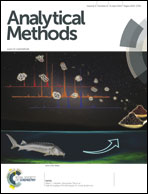Predicting putative adverse drug reaction related proteins based on network topological properties†
Abstract
Adverse drug reactions (ADRs) are one of the main issues restraining the development and clinical applications of new drugs. Owing to complicated molecular mechanisms of ADRs, various experimental and computational methods have been employed to detect them. It has been reported that a number of ADRs are induced by a series of actions triggered by drugs or their reactive metabolites that bind to therapeutic targets or other proteins involved in drug metabolism. The identification of these ADR-related proteins (ADRRPs) is an available avenue to explore adverse reactions of drugs. In this study, the human protein–protein interaction (PPI) network was constructed as a powerful tool for studying the molecular mechanisms of ADRs. Based on such a network, five network topological properties were calculated to characterize proteins quantitatively. Then a random forest model for ADRRP prediction was built which was dependent on these properties. The prediction model yielded a satisfactory result with a sensitivity of 87.3%, a specificity of 86.1% and an overall accuracy of 86.8%. Finally, text mining was applied to verify the predictions. Some of the predicted ADRRPs have been proved to be involved in regulating ADRs by experimental studies. The results suggested that the genome-wide human interaction network provides us with an effective channel for discovering ADRRPs.


 Please wait while we load your content...
Please wait while we load your content...